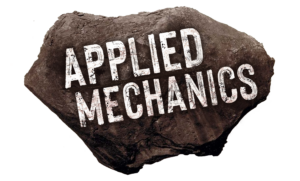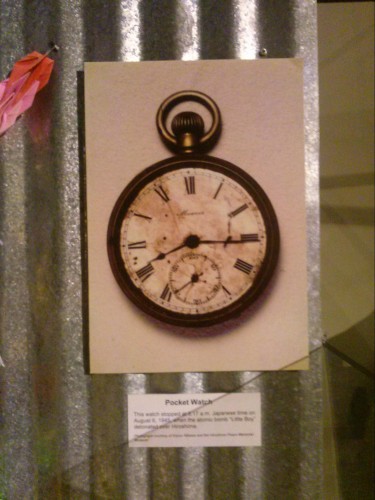By Jessica Hurley
05/05/2015
Time lies thick in Albuquerque. It is striated into the rocks that compose elegies in time’s medium; it races across the Great Plains alongside the clouds that turn light into ghost riders and uranium watercolors. Time is what this place is made of.
I went to Albuquerque in February to present at a conference, but I stayed to think about time. New Mexico is one of those places where the veneer of the present seems particularly thin. You drive around a new subdivision named The Petroglyphs, one of few housing developments fully to abandon the traditional adobe-style architecture of the Southwest in favor of an Anglo two-storey model, until somewhere behind the cupcake store you find the petroglyphs, images etched into the rocks between four and seven hundred years ago by Native Americans and Spanish colonists. You leave the cave dwellings of the Ancestral Pueblo People, built into the rock some 10,000 years ago, and drive the twenty minutes to Los Alamos, which in 1943 brought modern science kicking and screaming into the state as the home of the Manhattan Project and the cradle of the atom bomb.
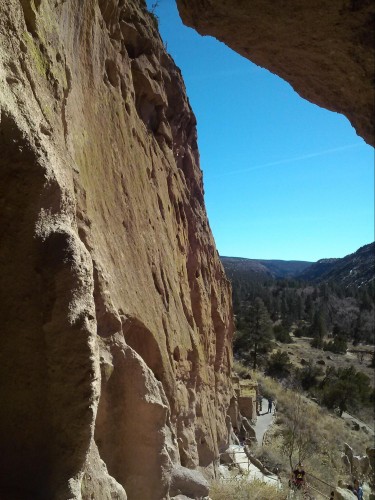
View from inside a Pueblo Cave Dwelling, Bandelier National Monument, 2015. Pueblo Indians still live in the surrounding areas; they are the only Native Americans not to have been forcibly relocated, making this the longest continuously-inhabited part of the continent.
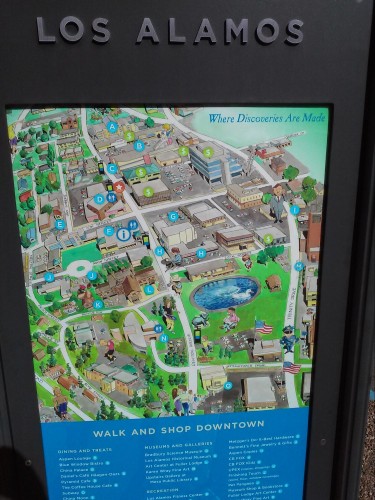
The land upon which Los Alamos was built belongs to the San Ildefonso and Santa Clara Pueblos. It was borrowed for the duration of the war, which did not, the ongoing occupation suggests, end in 1945. NB: Los Alamos does not look like this. Picture instead a series of strip malls that you have to pass through a security checkpoint to enter.
Drive to the southeast and you’ll find the Waste Isolation Pilot Project, the U.S. government’s only current site for burying the waste generated by the nuclear-military-industrial complex. This waste writes us into the deep future; we can expect it to stop being dangerous to living bodies in approximately 240,000 years.
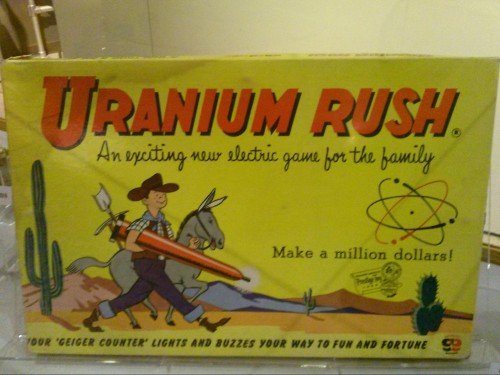
Uranium Rush Game, 1955. 60% of uranium mining and almost 100% of highly toxic uranium processing takes place on Native American land. Only 3-4% of the revenue from these materials goes to Native nations.
You turn on your faucet and the water comes out of it filtered through four hundred years of legal history: American Indian water rights established by treaty; the Spanish water conservation/irrigation system of acequias that operate beyond U.S. law; the efforts of grassroots activists in the region to protect the groundwater from the toxic overflows of heavy industry. If you’re lucky, that glass of water doesn’t contain uranium, or runoffs from the copper pits. If you’re white, your odds are better.
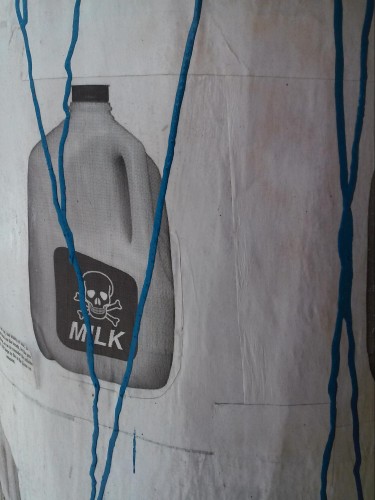
Installation outside the Museum of Contemporary Native Arts, Santa Fe 2015. Strontium-90 from hundreds of above-ground nuclear detonations was revealed to be accumulating in the teeth and bones of milk-fed children in the late 1950s. While testing above ground was banned in 1961, New Mexicans and Nevadans living in proximity to Los Alamos and the Nevada Test Site maintain high levels of exposure.
It’s fitting, really, that the nuclear complex was born in New Mexico. Here you experience the relativity of time and space in a visceral way. Stand in Los Alamos, and you live in the technomodernist present, where the future beckons invitingly in the form of atomic cars and endless green nuclear energy and nothing exists before 1943. Stand in Bandelier, or San Ildefonso Pueblo, and the past stretches back to time immemorial and continues into the future embodied in the rituals of everyday life. Your position in time, conversely, determines your experience of space: think in the foreshortened timescale of Los Alamos, and the U.S.A. fills the horizon in every direction. Think over the 10,000 years or more of human inhabitation of this land, or the 240,000 year lifespan of the nuclear waste that we produce more of each day, and the U.S. disappears in the blink of an eye, its borders and checkpoints and laboratories a shimmering mirage that will be gone before you know it. When we think about chronotopes, about timespaces, it’s worth remembering that we can switch between them if we choose. That we’re not stuck in the times and places within which we find ourselves, but can learn to see time and place differently and so translate our moments into other timelines, our world into other worlds. That drawing an imaginary map can happen in time, as well as space. That we are time travelers in a universe of stacked time, reaching beyond ourselves to make connections of mind and heart with those long dead, and those to whom we are the long dead, and that how we make these connections determines the whole world, if only for a moment. That time lies thick on all of us. It’s what we’re made of.
Pocket watch found in the ruins of Hiroshima. Stopped at 8.16am, August 6th, 1945.
